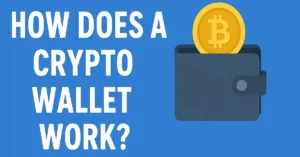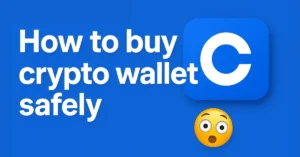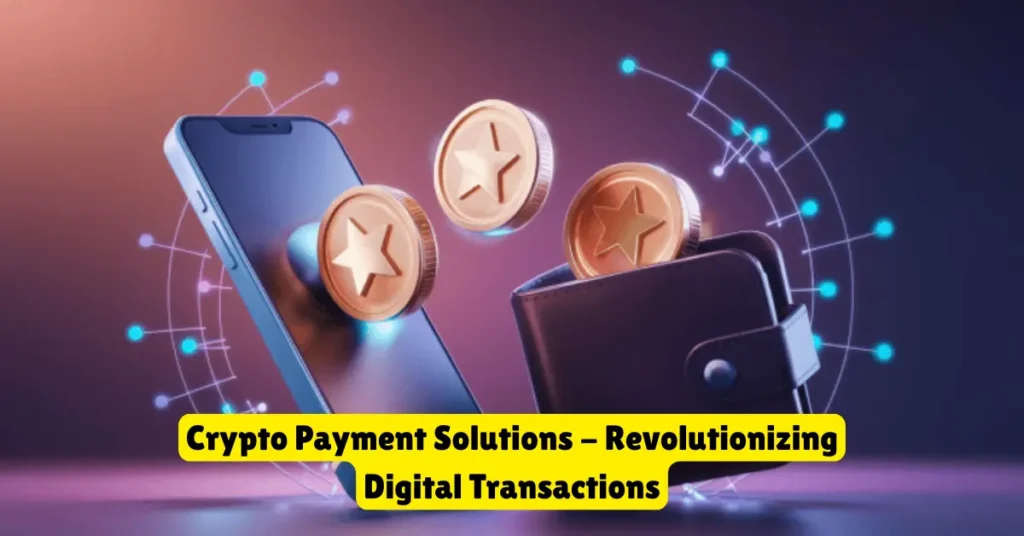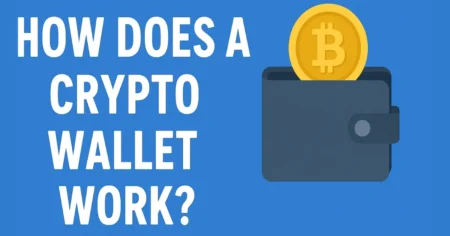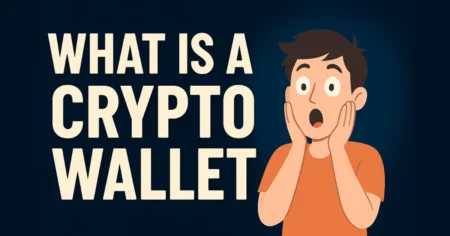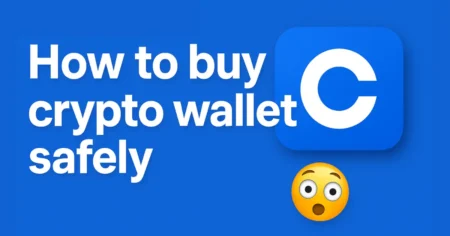Crypto payment solutions
Cryptocurrency payment solutions are changing the way people and businesses handle money. Instead of traditional card networks, banks, or payment processors, crypto payments rely on decentralized technology—allowing instant, permissionless, and global transactions. This isn’t just a new payment method; it’s a paradigm shift that brings lower fees, faster settlements, and greater access—especially for cross‑border transactions.
What makes crypto payments revolutionary is how they empower both merchants and clients. Imagine sending money across the world without waiting several days or paying hefty conversion fees. That’s real freedom. As adoption grows, many sectors—e‑commerce, freelancing, digital services—are embracing crypto gateways to accept Bitcoin, Ethereum, stablecoins, and more. And as users, you benefit from transparency and potential cost saving, while businesses gain access to new markets and quicker settlements.
In this post, we’ll explore the most popular crypto payment platforms in 2025, break down how to accept and withdraw crypto funds, and share practical tips and personal insights to help you choose the best solution for your needs.
Introduction
Cryptocurrency payments have shifted from early experimentation to real-world utility. Today, more merchants and freelancers are accepting crypto for goods and services—mainly thanks to evolving platforms that bridge crypto with familiar settlement methods like bank deposit or stablecoin conversion.
Here’s what’s driving adoption:
- Borderless Capability: Crypto isn’t constrained by country or bank systems. You can receive funds from anywhere instantly.
- Lower Fees: Traditional payment systems often charge 2–3% plus currency conversion fees. Many crypto gateways offer flat or minimal fees, sometimes as low as 0.5%, especially for stablecoin routing.
- Speed: Some blockchains settle in seconds to minutes, whereas bank transfers can take days—especially cross-border.
- Permissionless Access: Anyone with a crypto wallet or platform account can send funds, without intermediaries or gatekeeping.
- Merchant Tools: Invoicing, API integration, checkout widgets, recurring billing—increasingly, crypto gateways offer features similar to Stripe or PayPal.
However, crypto payments are not without challenges. Volatility in crypto prices, regulatory compliance, tax reporting, and user experience friction still require careful navigation. In upcoming sections, we’ll dive into specific platform types, how withdrawals work, and what to consider when picking one.
Types of Crypto Payment Platforms
Different platforms suit different needs—so it’s important to understand the categories:
On‑chain Wallets
These are you managing crypto the traditional way: using a private key wallet like MetaMask, Exodus, or hardware wallets like Ledger. If you generate an invoice and ask the payer to send funds directly to your wallet address, that’s an on‑chain method. It’s the most decentralized approach, with no middleman. You receive crypto directly and control everything. But it also puts responsibility on you—like managing keys, monitoring confirmations, and potentially converting crypto manually.
Custodial Wallets
These platforms manage your private keys for you. Services like Coinbase, Binance, or BlockFi (depending on region) let you receive and hold crypto. Payment from clients goes into your wallet on the platform. It’s easier from a usability perspective, but requires trust in the provider and their security measures. You often confirm identity (KYC), and you may pay withdrawal or conversion fees.
Payment Processors
These are full-stack services that let you accept crypto and instantly convert it—either into crypto in your wallet or fiat currency. Examples include:
- Coinbase Commerce
- BitPay
- NOWPayments
They provide tools: checkout buttons, hosted invoice pages, APIs, and plugins for e‑commerce platforms. The key advantage here is a smooth checkout experience for customers and payout options (crypto or fiat) for merchants.
Non‑Custodial Payment Gateways
These act like payment processors but don’t hold your funds. Instead, they facilitate direct transfers to your wallet—sometimes using smart contracts or escrow. You sign transactions on the client side. This model balances usability and self-custody, offering more control but still convenience.
Peer‑to‑Peer Invoice Protocols
These rely on networks such as the Lightning Network—a second-layer protocol built on Bitcoin. Tools like LNUrl, LNBits, or Strike let you create invoices that someone can pay instantly. Funds settle on‑chain later or net‑settle in batches. This is ideal for micropayments or recurring low-value payments, with minimal fees and near-instant delivery.
These five categories cover most crypto payment needs. Choosing between them depends on your comfort with custody, technical skill, the volume of payments, and whether you want to convert to fiat immediately.
Key Features to Evaluate
When evaluating platforms, these features are critical:
Supported Cryptocurrencies
Some platforms support only major coins—Bitcoin (BTC), Ethereum (ETH), and a handful of stablecoins like USDC, USDT. Others also allow smaller tokens or regional stablecoins. If your customers prefer a specific coin, you need support for that. Also check if the platform itself risks delisting or pausing coins in volatile moments.
Transaction Fees & Settlement Times
There are two layers of fees:
- Blockchain network fees — varies by chain and congestion.
- Platform fees — many processors charge a percentage per transaction or spread on conversion.
Settlement speed varies: on‑chain BTC could take 10 minutes per confirmation; Lightning or Ethereum Layer‑2 solutions settle faster. If you need payouts in fiat, check how quickly the platform processes withdrawals to your bank or exchange wallet.
Security & Custody Model
Who holds the private keys? If it’s you (non‑custodial), your security practices—backups, hardware wallets, passphrase protection—matter. If it’s the provider (custodial), their security protocols, insurance coverage, regulatory compliance, and track record are essential to review.
KYC/AML Requirements
Most regulated platforms require Know‑Your‑Customer onboarding—submit documents, verify identity, and in some cases justify the source of funds. Non‑custodial tools may require minimal or no KYC up to certain thresholds.
Currency Conversion & Payout Options
After receiving crypto, can you instantly convert to fiat? Or stablecoins? Can you choose payout to bank account, via ACH, SWIFT, SEPA, or crypto address? Fees and settlement times vary widely for these conversions or payouts—check what each platform supports.
Popular Crypto Payment Solutions in 2025
Let’s break down the most reliable and widely used crypto payment platforms today. These aren’t just flashy names—they’re trusted by merchants, freelancers, and even small businesses globally for their consistent performance, withdrawal ease, and multi-coin support.
BitPay
BitPay has been a leader in crypto payments for over a decade. It lets businesses accept payments in Bitcoin, Bitcoin Cash, Ethereum, and a few stablecoins. You can settle funds in crypto or fiat, giving flexibility based on your location and banking preferences.
Features:
- Hosted payment buttons, invoices, plugins (WooCommerce, Shopify)
- Optional conversion to local fiat
- KYC and merchant verification required
- High level of security and fraud protection
Best for: Medium to large merchants, high-volume service providers, and those wanting fiat conversion without third-party exchanges.
Coinbase Commerce
Coinbase Commerce enables crypto payments with zero middlemen. It integrates well with Coinbase’s main exchange, which is handy for withdrawals or conversions.
Highlights:
- Non-custodial by default—you control private keys unless you opt for custodial
- Supports BTC, ETH, USDC, LTC, DAI, and more
- Dashboard, invoice links, and integration APIs
- Instant payment detection and webhook support
Coinbase’s reputation gives it trust among users, especially in regulated markets. Though crypto-native, it’s beginner-friendly too.
Binance Pay
Binance Pay connects directly with Binance users and supports over 200 cryptocurrencies. It’s one of the few platforms to combine P2P transactions, merchant tools, and wallet-to-wallet instant payments—all inside one ecosystem.
Strengths:
- No fees for sending/receiving payments within Binance
- Built-in merchant services, QR payments, API checkout
- Fast conversion to other crypto or fiat within Binance
- Mobile app, browser wallet, and POS terminal support
If you’re already on Binance, it’s incredibly convenient for managing payments, liquidity, and fast withdrawals—all in one dashboard.
NOWPayments
NOWPayments is a non-custodial crypto gateway that supports 150+ coins. It’s great for flexibility and privacy.
Key points:
- No KYC required for most services
- Non-custodial model: funds go directly to your wallet
- Supports fiat conversion via ChangeNOW partners
- Easy-to-use dashboard, POS widget, API, donation buttons
It’s particularly useful if you want to avoid full onboarding and just start accepting payments with a simple address and webhook.
Lightning Network-based Solutions
For fast, ultra-low-fee transactions, the Lightning Network is growing fast. Tools like:
- LNBits
- BTCPay Server with Lightning
- Strike
They enable real-time settlement, low fees (often under a penny), and privacy. These solutions are best for developers, tech-savvy merchants, or those doing many small transactions (think donations, micropayments, digital content).
How to Withdraw Payments from These Platforms
After you receive crypto, you’ll want to convert or move it—either into fiat or another wallet. Here’s how to do it on each platform.
From BitPay
BitPay allows two main withdrawal methods:
- Crypto Payouts — Send directly to your self-custody wallet.
- Bank Settlement — Convert to fiat and settle to your linked bank account.
You need to:
- Complete KYC and merchant approval
- Link your bank account (ACH, SEPA, or wire)
- Set up automatic or manual settlement preferences
Settlements take 1–3 business days depending on region. You can also set thresholds to reduce fees by batching payouts.
From Coinbase Commerce
You have two options:
- Withdraw to your external wallet (non-custodial)
- Connect to your Coinbase exchange account
If you link Coinbase:
- You can convert crypto into fiat
- Withdraw funds via bank transfer, PayPal (in supported countries), or crypto to another exchange
- You retain full control if you stay non-custodial, but conversion is easier via Coinbase accounts.
From Binance Pay
Binance Pay integrates fully with your Binance Wallet:
- Go to Binance Pay > Payment History > Withdraw
- Funds show up in your spot wallet
- Convert instantly to fiat or other crypto
- Withdraw via P2P, bank transfer, or external wallet
Fiat withdrawals may require ID verification depending on jurisdiction.
From NOWPayments
NOWPayments uses your own wallet address, so funds never stay on the platform. But for conversions:
- You can route payments via ChangeNOW to convert to fiat or stablecoins
- Use an exchange wallet (Kraken, Binance) as your receiving address if you want instant liquidity
- Withdrawals aren’t needed here because it’s non-custodial—just manage your own keys and wallet security.
H3. From Lightning Network Wallets
Most Lightning apps (like Muun, Phoenix, Breez) let you:
- Receive LN payments directly
- Auto-convert to on-chain Bitcoin
- Send to exchanges or self-custody wallets
Some advanced tools let you auto-stream payments to cold storage or convert via submarine swaps. For withdrawing to fiat, you’d need to send to an exchange that supports BTC and cash out from there.
Pros and Cons of Crypto Payment Platforms
Before choosing your tool, understand what’s at stake.
Advantages
| Low Fees – Especially for large transactions or global settlements. |
| No Chargebacks – Unlike credit cards, crypto payments are irreversible. |
| Speed – Instant or near-instant settlement depending on network. |
| Borderless – Works in any country, no permission needed. |
| Wide Range of Currencies – Accept BTC, ETH, USDC, and more—let users pay how they prefer. |
| Modern Appeal – Attracts younger, tech-friendly customers who want crypto payment options. |
Limitations and Risks
| Volatility – Coins like BTC/ETH fluctuate often; your $100 today might be $92 tomorrow. |
| KYC Requirements – Many platforms require identity verification and compliance. |
| Tech Complexity – If you’re not tech-savvy, wallets and invoice setups might be confusing. |
| Regulation Uncertainty – Laws are changing; your platform might need to update its terms or block features. |
| Security – If using self-custody wallets, you must handle backups, private keys, and protection against hacks. |
Real-World Use Cases
Crypto payments aren’t just theory. They’re solving real problems for real people right now.
Freelancers and Service Providers
Many remote freelancers—writers, developers, marketers—prefer being paid in USDT or BTC. Platforms like Binance Pay or Coinbase Commerce make it simple to accept these directly. For them, it avoids PayPal limits, high bank fees, and waiting weeks for payment clearance.
Tip: Freelancers should use non-custodial wallets like Exodus or Muun for better control. Then, they can withdraw via P2P exchanges to local currency.
International Remittances
People sending money home often lose 5–10% in conversion and transfer fees. Crypto solves that instantly. For example:
- Someone in Europe can send USDT via Binance Pay
- The receiver in Asia uses P2P platforms to withdraw in local currency
- It’s fast, direct, and cuts out banks entirely.
Best Practices and Tips
To use crypto payment platforms effectively, you need more than just a working wallet. Here are some key practices that can save time, reduce fees, and protect your earnings.
Choosing the Right Platform
Every platform has trade-offs. Here’s what to think about when picking one:
- What crypto do you want to accept? If your clients pay in BTC or ETH, nearly every platform supports it. But if they use USDT (especially TRC20 or ERC20), make sure the network is supported.
- Do you want full control? Non-custodial services like NOWPayments or BTCPay Server let you own your funds from the start. Custodial services like Binance Pay or BitPay make management easier but give up some control.
- Need fiat withdrawals? Then choose platforms with bank integration like BitPay, Coinbase Commerce, or Binance Pay.
- Do you care about privacy? Non-KYC options still exist, like self-hosted LN tools or open-source invoice systems. However, they might lack support or stability.
Suggestion: If you’re new, start with Coinbase Commerce or Binance Pay. They’re relatively simple and have strong ecosystems.
Managing Security and Backups
Crypto payments require a strong security mindset. Here’s a simple breakdown:
- Self-custody wallets: Always back up your seed phrase and store it offline—never on a digital notepad or email.
- Use hardware wallets: If you’re receiving high-value payments regularly, invest in a Ledger or Trezor for offline protection.
- Use 2FA (two-factor authentication): For platforms like Binance and Coinbase, always enable Google Authenticator or similar tools.
- Secure your devices: Keep your browser updated, avoid sketchy extensions, and use antivirus if you’re not tech-savvy.
My advice: Never depend on a single device or app. Diversify your wallets and always have a backup plan.
Handling Volatility and Conversion
Cryptocurrencies can swing 10% or more in a day. Here’s how to manage it:
- Use stablecoins (USDT, USDC): Great for preserving value.
- Auto-convert to fiat or stables: Platforms like BitPay and Coinbase Commerce allow instant conversion after receiving.
- Batch your conversions: If your earnings are low in volume, wait until you’ve accumulated enough to convert efficiently.
You don’t need to be a day trader to manage crypto—just be aware of timing and coin behavior. Avoid holding volatile coins longer than necessary unless you’re investing intentionally.
Legal and Tax Considerations
This part is often overlooked but very important.
Crypto is taxable income in most countries. If you receive payments, even in stablecoins, you may be liable for income tax.
- Keep records: Track every payment, wallet address, date, and USD equivalent value. Platforms like CoinTracker or Koinly help automate this.
- Use separate wallets: Keep your personal crypto separate from business payments to simplify tracking.
- Check local laws: Some countries require registration or tax declarations for crypto-based businesses.
I’m not offering legal advice here—but ignorance doesn’t protect you from the taxman. So stay informed and organized.
Personal Recommendations and Insights
Now let’s get personal. Based on hands-on experience and conversations with many crypto users, here’s what I recommend:
My Favorite Tools and Setups
Here’s a setup I personally trust and recommend for individual professionals and small businesses:
- Coinbase Commerce for receiving BTC, ETH, USDC, with easy conversion and a clean dashboard
- Binance Pay for quick payments and built-in liquidity
- NOWPayments if you want full control and privacy
- Muun Wallet or Phoenix for fast Lightning Network transactions with low fees
For storage: I keep most of my funds in cold storage using Ledger, and I only keep operational liquidity in hot wallets.
Tips I’ve Learned Working with Crypto Payments
- Don’t keep all your earnings in volatile coins. Transfer to USDT or fiat regularly unless you’re willing to ride the market.
- Monitor gas fees. Avoid Ethereum-based transactions during high congestion. Use TRON (TRC20) or Lightning for cheaper transfers.
- Double-check wallet addresses. Always. A single wrong character means your funds are gone—forever.
- Use aliases or domains. Services like ENS or Unstoppable Domains let you receive payments at yourname.crypto instead of 42-character hashes.
These tips come from mistakes I or others have made—learn from them before it costs you.
Pitfalls to Avoid
- Using only one wallet: If it gets compromised, you lose everything. Always diversify.
- Ignoring platform limits: Many services have daily limits for withdrawals—be aware before processing large payments.
- Leaving funds idle on platforms: Withdraw regularly. You never know when a platform might halt services (especially smaller or unregulated ones).
- Falling for phishing emails: Always go directly to the platform’s website—never click login links from email.
Crypto gives you freedom—but that also means responsibility. There’s no one to call when you make a mistake, so be cautious and stay sharp.
Future Trends in Crypto Payments
We’re not just standing still—crypto payments are evolving fast. Here are the hottest trends shaping the future:
Stablecoin Invoicing
More merchants now demand stablecoins like USDT and USDC for invoicing. Why?
- No volatility – Value stays pegged to the dollar
- Faster settlement – TRC20 or BEP20 networks make transactions almost instant
- Wider acceptance – Especially in regions facing inflation or banking restrictions
We may soon see stablecoin support as a default in crypto payment gateways, and even B2B contracts denominated in stablecoins.
Layer-2 Scaling and Micropayments
Platforms like the Lightning Network (for BTC) and zkSync/Arbitrum (for ETH) are making transactions cheaper and faster. This enables:
- Micropayments – Sending pennies for content, pay-per-click, or donations
- Streaming payments – Paying freelancers by the minute
- Instant tips or bonuses in games or live platforms
- Expect crypto to infiltrate places where traditional payments just don’t scale.
Cross-Chain Payment Networks
As blockchains grow, interoperability is becoming crucial. Tools like THORChain, Axelar, and SquidRouter are helping transfer value across chains without centralized exchanges.
This means:
- You could accept ETH and get paid in BTC
- Accept TRON and withdraw in MATIC
- Let clients pay in any token, and you receive your preferred stablecoin
The future is chain-agnostic. Payments will flow across blockchains just like messages across apps.
Conclusion
Crypto payment solutions are no longer experimental—they’re real, reliable, and reshaping how we exchange value globally. Whether you’re a freelancer, digital entrepreneur, or crypto enthusiast, accepting and managing crypto payments today can open up doors that traditional systems keep shut.
We covered the major platforms—BitPay, Coinbase Commerce, Binance Pay, NOWPayments, and Lightning tools—plus withdrawal processes, key features, and best practices. With the right tools and mindset, anyone can harness the power of decentralized payments securely and efficiently.
Remember: don’t just follow the hype—learn, test, and use the right tools for your workflow. Crypto gives you more power, but it also asks more from you. Stay alert, be organized, and always back up your wallets.
FAQs
Q1: Which crypto payment platform is best for beginners?
A: Coinbase Commerce and Binance Pay are ideal. They’re user-friendly, widely trusted, and offer smooth crypto-to-fiat conversion.
Q2: Can I accept crypto without revealing my identity?
A: Yes, through non-custodial services like NOWPayments or BTCPay Server, but you’ll need to handle security and taxes yourself.
Q3: What are the safest ways to store received crypto?
A: Use a hardware wallet like Ledger for long-term storage. For active use, hot wallets like Trust Wallet or MetaMask with strong backups are good.
Q4: Do I have to convert crypto to fiat?
A: No. You can hold crypto, convert to stablecoins, or withdraw in fiat—it depends on your strategy and risk preference.
Q5: Are crypto payments legal in my country?
A: It depends. Many countries allow them, but taxation and regulation differ. Always check your local laws or consult a crypto-savvy accountant.
Also, read
- What is a Crypto Wallet and How Does It Work? – Coinsify
- 10 Crypto Terms Every Beginner Must Know – Coinsify
- What is Blockchain Technology – Complete Guide – Coinsify
- How to Buy Crypto Safely in 2025 – Complete Guide – Coinsify
- Bitcoin vs Ethereum: Key Differences Explained – Complete Guide
- Ultimate Blockchain Glossary: Learn Blockchain Terms Easily
- How to Buy Bitcoin Safely (Complete Beginner’s Guide)
- Top 10 Crypto Wallets for Beginners (2025 Edition)
- What is Cryptocurrency? A Beginner-Friendly Guide (2025)
